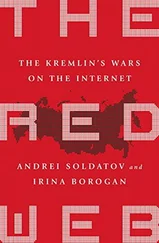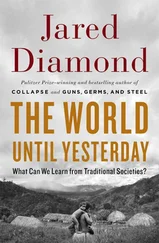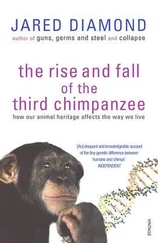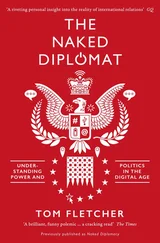Jared Cohen - The New Digital Age
Здесь есть возможность читать онлайн «Jared Cohen - The New Digital Age» весь текст электронной книги совершенно бесплатно (целиком полную версию без сокращений). В некоторых случаях можно слушать аудио, скачать через торрент в формате fb2 и присутствует краткое содержание. Жанр: Старинная литература, на английском языке. Описание произведения, (предисловие) а так же отзывы посетителей доступны на портале библиотеки ЛибКат.
- Название:The New Digital Age
- Автор:
- Жанр:
- Год:неизвестен
- ISBN:нет данных
- Рейтинг книги:5 / 5. Голосов: 1
-
Избранное:Добавить в избранное
- Отзывы:
-
Ваша оценка:
- 100
- 1
- 2
- 3
- 4
- 5
The New Digital Age: краткое содержание, описание и аннотация
Предлагаем к чтению аннотацию, описание, краткое содержание или предисловие (зависит от того, что написал сам автор книги «The New Digital Age»). Если вы не нашли необходимую информацию о книге — напишите в комментариях, мы постараемся отыскать её.
The New Digital Age — читать онлайн бесплатно полную книгу (весь текст) целиком
Ниже представлен текст книги, разбитый по страницам. Система сохранения места последней прочитанной страницы, позволяет с удобством читать онлайн бесплатно книгу «The New Digital Age», без необходимости каждый раз заново искать на чём Вы остановились. Поставьте закладку, и сможете в любой момент перейти на страницу, на которой закончили чтение.
Интервал:
Закладка:
In fact, virtual discrimination will suit some extremists better than their current options, as a former neo-Nazi leader and current anti-hate activist named Christian Picciolini told us. “Online intimidation by hate groups or extremists is more easily perpetrated because the web dehumanizes the interaction and provides a layer of anonymity and ‘virtual’ disconnection,” he explained. “Having the Internet as an impersonal buffer makes it easier for the intimidator to say certain harmful things that might not normally be said face-to-face for fear of peer judgment or persecution. Racist rhetoric rightfully carries a certain social stigma against the general population, but online, words can be said without being connected to the one saying [them].” Picciolini expects virtual harassment by hate groups to increase significantly in the coming years, since “the consequences of online discrimination seem less audacious to the offender, and therefore [harassment will] happen more frequently and to a more vehement degree.”
In the past, physical and legal exclusion was the dominant tactic used by the powerful in conflict-prone societies, and we believe that virtual exclusion will come to join (but not surpass) that tool kit. When the conditions become unbearable, as throughout history, the sparks of conflict will ignite.
Multidimensional Conflict
Misinformation and propaganda have always been central features of human conflict. Julius Caesar filled his famous account of the Gallic Wars (58 B.C.–50 B.C.) with titillating reports of the vicious barbarian tribes he’d fought. In the fog of competing narratives, determining the “good” and “bad” actors in a conflict is a critical yet often difficult task, and it will become even more challenging in the new digital age. In the future, marketing wars between groups will become a defining feature of conflict, because all sides will have access to electronic platforms, tools and devices that enhance their storytelling abilities for audiences at home and abroad. We saw this unfold during the November 2012 conflict between Israel and Hamas, when the terrorist organization launched a grassroots marketing war that flooded the virtual world with graphic photos of dead women and children. Hamas, which thrives on a public that is humiliated and demoralized, was able to exploit the larger number of casualties in Gaza. Israel, which focuses more on managing national morale and reducing ambiguity around its actions, countered by utilizing an @IDFSpokesperson Twitter handle, which included tweets like “Video: IDF pilots wait for area to be clear of civilians before striking target youtube.com/watch?v=G6a112wRmBs … #Gaza.” But the reality of marketing wars are that the side which is happy to glorify death and use it for propaganda will often gain wider-spread sympathy, especially as a larger and less-informed audience joins the conversation. Hamas’s propaganda tactics were not new, but the growing ubiquity of platforms such as YouTube, Facebook and Twitter made it possible for them to reach a much larger and non-Arabic-speaking audience in the West, who with each tweet, like and plus-one amplified Hamas’s marketing war.
Groups in conflict will try to destroy each other’s digital marketing capabilities before a conflict even starts. Few conflicts are clearly black-and-white at the end—let alone when they start—and this near-equivalency in communications power will greatly affect how civilians, leaders, militaries and the media deal with conflict. What’s more, the very fact that anyone can produce and share his or her version of events will actually nullify many claims; with so many conflicting accounts and without credible verification, all claims become devalued. In war, data management (compiling, indexing, ranking and verifying the content emanating from a conflict zone) will shortly succeed access to technology as the predominant challenge.
Modern communication technologies enable both the victims and the aggressors in a given conflict to cast doubt on the narrative of the other side more persuasively than with any media in history. For states, the quality of their marketing might be all that lies between staying in power and facing a foreign intervention. For civilians trapped in a town under siege by government forces, powerful amateur videos and real-time satellite mapping can counter the claims of the state and strongly suggest, if not prove, that it is lying. Yet in a situation like the 2011 violence in Côte d’Ivoire (where two sides became locked in a violent battle over contested electoral results), if both parties have equally good digital marketing, it becomes much harder to discern what is really happening. And if neither side is fully in control of its marketing (that is, if impassioned individuals outside the central command produce their own content), the level of obfuscation rises even more.
For outsiders looking in, already difficult questions, like who to speak with to understand a conflict, who to support in a conflict and how best to support them, become considerably more complicated in an age of marketing wars. (This is particularly true when not many outsiders speak the local language, or in the absence of standing alliances, like between NATO countries or the SADC countries, the Southern African Development Community.) Critical information needed to make those decisions will be buried beneath volumes of biased and conflicting content emanating from the conflict zone. States rarely intervene militarily unless it is very clear what is taking place, and even then they often hesitate for fear of the unforeseen physical consequences and the scrutiny in the twenty-four-hour news cycle. 2
Marketing wars within a conflict abroad will have domestic political implications, too. If the bulk of the American public, swayed by one side’s emotionally charged videos, concludes that intervention in a given conflict is a moral necessity, but the U.S. government’s intelligence suggests that those videos aren’t reflective of the real dynamics in the conflict, how should the administration respond? It can’t release classified material to justify its position, but neither can it effectively counter the narrative embraced by the public. If both sides present equally persuasive versions, outside actors become frozen in place, unable to take a step in any direction—which might be the exact goal of one of the parties in the conflict.
In societies susceptible to ethnic or sectarian violence, marketing wars will typically begin long before there is a spark that ignites any actual fighting. Connectivity and virtual space, as we’ve shown, can often amplify historical and manufactured grievances, strengthening the dissonant perspectives instead of smoothing over their inaccuracies. Sectarian tensions that have lain somewhat dormant for years might reignite once people have access to an anonymous online space. We’ve seen how religious sensitivities can become inflamed almost instantaneously when controversial speech or images reach the Internet—the Danish cartoon controversy in 2005 and violent demonstrations over the Innocence of Muslims video in 2012 are just a couple of many prominent examples—and it’s inevitable that online space will create more ways for people to offend one another. The viral nature of incendiary content will not allow an offensive act in any part of the world to go unnoticed.
Marketing is not the same thing as intelligence, of course. Early attempts at digital marketing by groups in conflict will be little more than crude propaganda and misinformation transferred to a virtual platform. But over time, as these behaviors are adopted around the world by states and individuals, the aesthetic distance between intelligence and marketing will close. States will have to be careful not to mistake one for the other. Once groups are wise to what they need to produce in order to generate a specific response, they will be able to tailor their content and messaging accordingly.
Читать дальшеИнтервал:
Закладка:
Похожие книги на «The New Digital Age»
Представляем Вашему вниманию похожие книги на «The New Digital Age» списком для выбора. Мы отобрали схожую по названию и смыслу литературу в надежде предоставить читателям больше вариантов отыскать новые, интересные, ещё непрочитанные произведения.
Обсуждение, отзывы о книге «The New Digital Age» и просто собственные мнения читателей. Оставьте ваши комментарии, напишите, что Вы думаете о произведении, его смысле или главных героях. Укажите что конкретно понравилось, а что нет, и почему Вы так считаете.












